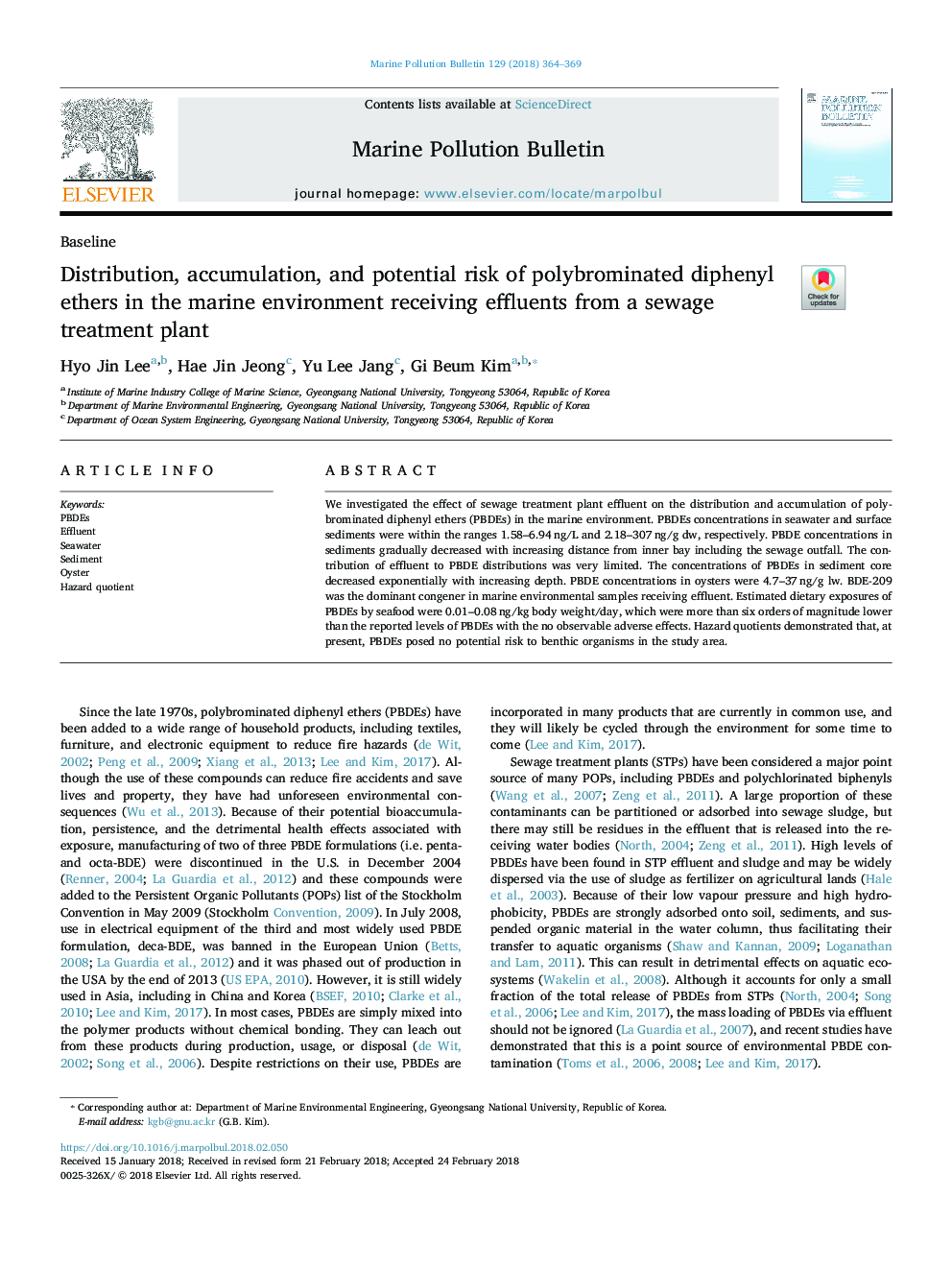| Article ID | Journal | Published Year | Pages | File Type |
|---|---|---|---|---|
| 8871571 | Marine Pollution Bulletin | 2018 | 6 Pages |
Abstract
We investigated the effect of sewage treatment plant effluent on the distribution and accumulation of polybrominated diphenyl ethers (PBDEs) in the marine environment. PBDEs concentrations in seawater and surface sediments were within the ranges 1.58-6.94â¯ng/L and 2.18-307â¯ng/g dw, respectively. PBDE concentrations in sediments gradually decreased with increasing distance from inner bay including the sewage outfall. The contribution of effluent to PBDE distributions was very limited. The concentrations of PBDEs in sediment core decreased exponentially with increasing depth. PBDE concentrations in oysters were 4.7-37â¯ng/g lw. BDE-209 was the dominant congener in marine environmental samples receiving effluent. Estimated dietary exposures of PBDEs by seafood were 0.01-0.08â¯ng/kg body weight/day, which were more than six orders of magnitude lower than the reported levels of PBDEs with the no observable adverse effects. Hazard quotients demonstrated that, at present, PBDEs posed no potential risk to benthic organisms in the study area.
Related Topics
Physical Sciences and Engineering
Earth and Planetary Sciences
Oceanography
Authors
Hyo Jin Lee, Hae Jin Jeong, Yu Lee Jang, Gi Beum Kim,
